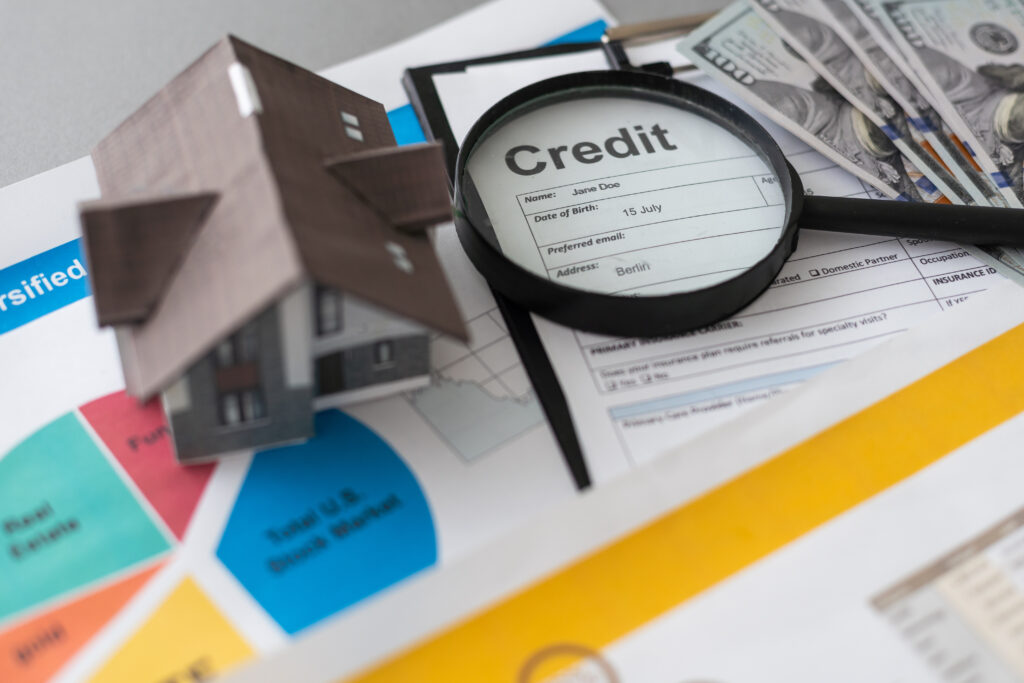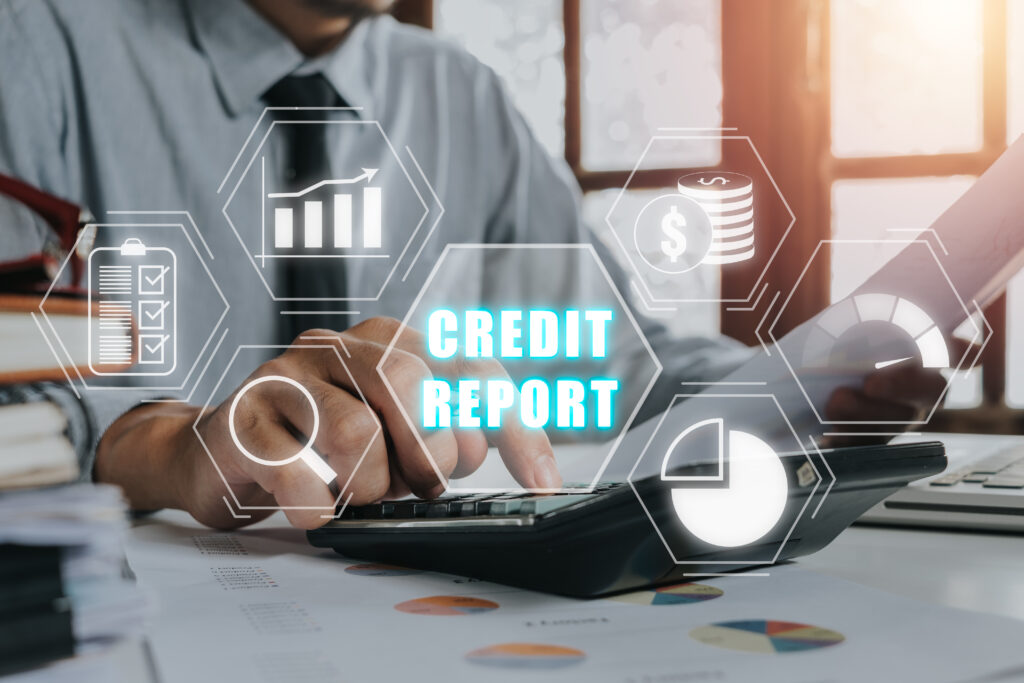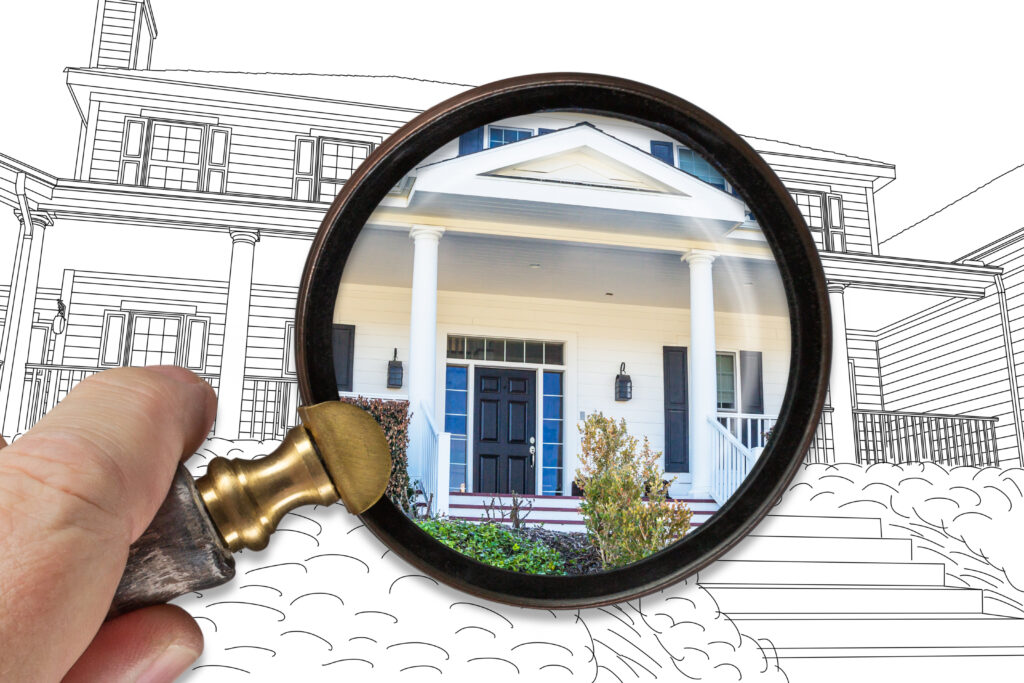Essential Steps to Buying a House for the First-Time: A Practical Guide
- Key Takeaways
- Getting Started on the Steps to Buying a House
- Credit Score & Preapproval: Essentials In The Steps to Buying a House
- Understanding Credit Reports in the Steps to Buying a House
- Navigating Mortgage Pre-approval
- How to Calculate Affordability: Budgeting for Your Dream Home
- Choosing a Realtor: Who’ll Guide You Through the Steps to Buying a House
- Starting House Hunting: Next in the Steps to Buying a House
- Submitting an Offer: Making it Official
- Home Inspection & Appraisal: Critical in The Steps To Buying A Home
- Securing Homeowners Insurance: Protect Your Investment
- Closing the Deal: The Final Steps to Buying a House Before Ownership
- Post-Purchase Tips To Welcome You to Your Home
- FAQs About The Steps To Buying A House
Key Takeaways
- The steps to buying a house can seem overwhelming, with multiple requirements along the way. Your realtor can make the home buying process a bit easier than you think.
- Work with your agent on how to buy a house that’s right for your needs and is a good deal.
- It’s best to build up your credit score and check your report before applying. Then, apply for the type of mortgage best suited to your needs.
- The steps to buying a house include improving your credit, choosing the right mortgage, and understanding key aspects like first-time home buyer programs, negotiation, inspections, and appraisals.
- To improve your knowledge, check out these 15 essential insider tips to buying your first home.
- Finally, when closing on a home, the house-buying process is complete, and you own your home.
Getting Started on the Steps to Buying a House
There’s nothing quite as exciting as owning your own home. As first-time buyers, there are numerous elements of the home buying process you need to understand before jumping in to make an offer and move in. The good news is that we’re going to break down the steps to buying a house, giving you the insights and tools you need to make the best buying decision for yourself.
In this step-by-step guide, we’ll outline the entire process – from being emotionally ready to buy a home to being confident that you can make a mortgage payment with ease.
Before you move forward with the steps to buying a house, establish a few basic homeownership goals.
- How long do you want to live in this home?
- Do you want to invest in a specific area?
- What are the needs you have for this home?
- How much do you want your monthly mortgage payment to be?
- What type of home fits your needs?
As you begin to think about the answers to these questions, continue to work through this guide. The more you know about the home buying process, the better the experience will be for you.
It’s a big decision. Before you make it, let’s make sure you have the know-how to make wise financial decisions confidently.
Credit Score & Preapproval: Essentials In The Steps to Buying a House
Before going further, focus on your current financial health. The National Association of Realtors states that 80% of buyers finance their home purchase. Obtaining a mortgage is common, but to do that, you need to qualify.
There are several steps to qualifying for a mortgage. Ultimately, your lender wants to know you have the financial means and skill to make payments on time. To do that, they look at all of the details you can offer.
Your credit score
Your FICO credit score is one of the most important indications of your ability to make payments on time, manage credit wisely, and hold up your end of the deal with a lender. It’s critical to have a high credit score.
Every lender sets their minimum credit score requirements based on the type of mortgage available to you. Typically, a Tri-Merge score, which is a combination of all three credit bureau reports, is used. Depending on the type of loan you obtain, you’ll need to meet some basic credit score requirements:
- FHA Loans: 580 credit score or higher (some lenders will require a higher score for an FHA loan, up to 600 or 620, depending on qualifications)
- VA Loans: VA loans do not have a minimum credit score requirement, though most lenders require at least a 600 credit score.
- Conventional Loans: 620 or higher credit score; the best interest rates are available to those with a credit score of 680 to 700.
If you don’t meet the minimum credit score requirements, a qualified mortgage lender can help advise on steps to improve your credit score!
Mortgage Pre-Qualification
If you meet these requirements, your next step should be to consider mortgage pre-qualification. In the buying house process, mortgage pre-qualification is an initial agreement with a lender to provide you with a loan. You have met the basic requirements the lender sets to purchase a home, but they have not yet verified that information. (Once the information is verified, it’s called a preapproval).
Prequalification is one of the steps to buy a house because it allows the lender to:
- Give you an estimate of what they can lend to you along with a breakdown of the estimated monthly payments
- Provide you with a starting point for starting the process of finding a home
- Help you to learn about loan programs you may qualify for
To gain pre-approval, you will need to complete a formal loan application with a mortgage lender. To do this, you’ll need to present your qualifications. Typically, this means you will need to provide key documents to support your ability to purchase:
- Personal identification from a state-issued ID
- Social Security numbers
- Address and contact information
- A list of your current expenses
- Proof of your income from W-2s, paycheck stubs, and other employment-related information
- Past tax forms to verify your income
- Bank statements showing your liquid assets (such as a savings account with the money to use as a minimum down payment)
With all of this information, you can start the process of buying a house with a formal application from the lender. From there, the lender will tell you if they can lend to you, how much they can loan you, and what the monthly payment is likely to be.
You will get a pre-approval letter. Use that to help you to compare several lender offers. Then, start the process of finding a home with your local realtor.
Understanding Credit Reports in the Steps to Buying a House
How do you know, then, what your credit score is? Before you apply for a loan, it pays to ensure your credit report is accurate. To do that, you can visit AnnualCreditReport.com. This is a free, government-sponsored website that provides you with access to all three of your credit reports without cost once a year. That includes your TransUnion, Equifax, and Experian credit reports.
You may also be able to get a copy of your credit report from your bank or credit card lenders (check your online accounts to find out.)
Why do you need to see your credit report? The Federal Trade Commission states that 1 in 5 people have at least one error on their credit report. Any error can lower your credit score, impacting the mortgage rates you qualify for and your ability to qualify for a loan.
It’s possible that some errors could be due to identity theft, which can create long-term financial loss for you. If you view your credit report and find accounts that are not yours, addresses that are not accurate, or any unfamiliar information, report it to the Consumer Financial Protection Bureau.
To find out how accurate your credit report is, use the Credit Report Review Checklist from the Consumer Financial Protection Bureau.
What to do if you find errors
Report all errors on your credit report to the credit bureau reporting this information. You can follow directions on the credit report to have inaccuracies removed. The Consumer Financial Protection Bureau mandates that the credit reporting company must investigate the dispute within 30 days of receiving it.
A qualified mortgage lender can help you through this process…
Ben Munson, Mortgage Lender: “In a most recent situation, I helped an active duty serviceman get a fraudulent credit card removed from his credit report. He had no idea that it was even on there, and even worse, he had no clue who had opened it in his name. I educated him on how to file a dispute with the credit bureau, and they ended up removing it from his credit report. His credit score went from 612 all the way up to 734, and Jake Maines & I were able to help him close on his first home.”
Navigating Mortgage Pre-approval
Prequalification is usually based on self-reported financial information and does not involve a hard credit check. This may mean it’s less accurate and may change some when you reach preapproval. During preapproval, all of the data is verified through full documentation and credit check.
Ben Munson: “I had a first time homebuyer come to me with a prequalification from an online lender, Her real estate agent was worried about the validity of the preapproval amount. This online lender said they were prequalified for $400,000. After obtaining their paystubs, bank statements, and a few other documents, I discovered that they were only able to buy a house for around $250,000. A preapproval, especially from an experienced Loan Officer, is so important.”
Preapproval requires submitting tax returns, paycheck stubs, a list of debts, and proof of assets. Once the lender completes this process, they are able to commit to providing a loan to you.
Once you receive that preapproval letter, don’t make any significant financial decisions. Avoid opening any new loans or making large purchases. Talk to your loan officer about any decisions you make that could impact your credit.
Most often, mortgage preapproval takes some time, but once you hear about being approved, you’ll receive a preapproval letter within 24 hours. It typically remains active for 60 to 90 days. That’s when first-time home buyers begin the steps to buying a house, house hunting, and going to open houses or showings.
How to Calculate Affordability: Budgeting for Your Dream Home
As you work through the steps to buying a house, you certainly need to think about what your options are but also what your financial goals are.
Your lender has told you what they can provide to you in a loan, but that doesn’t mean you should spend that much on a home price. You need to be comfortable with the monthly payments and find the best mortgage terms for your needs. A mortgage calculator can help you.
To determine what the lender thinks you can afford, they will look at your debt-to-income ratio (DTI). This determines how much money you have left over after paying your monthly expenses to cover the cost of a mortgage payment. Typically, lenders want your expenses to be under 28% of your monthly income, but some may approve at a higher rate.
Take a minute to use an affordability calculator. This can give you an idea of the ideal price range for you based on your income, savings, down payment, and expenses.
Don’t forget to add in other costs, including the principal payment (the amount you’re paying back over time), the interest (the fee for borrowing), any property taxes applicable in your area, home insurance costs, and private mortgage insurance (PMI) if you are making a down payment of less than 20%. Depending on where you buy, you may also have to pay a homeowners association (HOA) fee.
Next, consider the costs you’ll have to update and maintain the home. That may include:
- Utility costs
- Routine appliance repair and maintenance
- Roof repairs
- Plumbing and electrical repairs
- Any outside maintenance and updates
- Modernization or upgrades you need to make
- Updates that you want to make to personalize the space
Choose a price range that you feel comfortable with. When you consider the housing expense ratio, or the amount of money you bring in to the amount of money going out, keeping it as low as possible gives you more financial flexibility when you have unexpected costs to manage. The housing expense ratio, along with what you feel is comfortable within your own budget, is a key factor you need to think about before buying.
From Ben Munson: “There is always a difference between what you CAN buy and what you SHOULD buy. You don’t always have to buy at the top end of your preapproved budget. Make sure the payments fit within your monthly budget, and don’t let the house fever overtake good financial management.”
Importance of Down Payments
As you consider the steps to buying a house the first time, you have to consider how much down payment on a house is needed. Though the first-time home buyer does not always have to have a large amount of money as a down payment, it can be one of the most important ways to reduce your overall costs.
If you’re considering any of the various home loan programs, especially for a first-time home buyer, you’ll need to pay down less than a conventional loan. The following are some of the most common down payment requirements:
- FHA loans: 3.5% down
- USDA loans: Typically, 0% down for buying in a rural area. To find out if your location meets the requirement, use this tool: Eligibility for USDA loans.
- VA loans: Active members of the U.S. Armed Forces or qualified retirees may not need a down payment. To find out if you qualify for this, speak to your loan officer about your Certificate of Eligibility from the VA. Also, note that if you put 5 to 10% down, you could significantly reduce the VA funding fee.
- Conventional loans: 5% to 10% down or higher.
As you look at the steps to buying a house initially, keep in mind that you may qualify for down payment assistance. These programs may help you get a grant to reduce your down payment requirements. In some cases, you may be able to purchase a home with $0 down.
Also note that if you make a down payment of 20% or more with a conventional loan, you can avoid private mortgage insurance (PMI), which is an added fee otherwise.
How can you save for a down payment so you can start the buying house process? Open a separate savings account just for your down payment. Creating a budget and tracking your spending is also important. You can receive some support from family and friends, but you need a gift letter from that person. Talk to your loan officer about this before you invest.
Planning for Closing Costs
Closing costs include fees paid at the time of closing on the loan. It helps cover the cost of transferring property ownership and establishing the loan. This includes title services, title insurance, origination fees, and initial taxes. Closing costs range from 2 to 6% of the purchase price of the home.
It may be possible to wrap those closing costs into your loan. Other times, closing cost assistance programs may be used. It’s also sometimes possible to negotiate lower closing costs with the seller.
Quote from Jake Maines, “Searching for homes that have been on the market for longer than average or homes that need some work can be a great way to have the negotiating power as a buyer to get the seller to pay your closing costs.”
Choosing a Realtor: Who’ll Guide You Through the Steps to Buying a House
How do you buy a house? As you think about the steps to buying a house, know there’s help available. Use an agent you can trust! A good real estate agent will scour the market for homes that meet your needs and guide you through the negotiation and closing processes.
It’s important to assess an agent’s personality, ensure schedule compatibility, and feel comfortable that they have your best interest at heart. Be mindful of potential red flags, such as not taking you seriously or being unable to make time for you. This person will be critical in the process of buying a house. They need to be a powerful negotiator throughout the home-buying process, a trusted ally, and a transparent professional.
Starting House Hunting: Next in the Steps to Buying a House
This is when the steps to buying a house get fun! Once you get preapproved and consider the amount you wish to spend, work closely with your real estate agent to find your desired home. Keep in mind that if you look for a home that’s under your budget, you’ll have some wiggle room if you need to place a counteroffer against a competitive bidder on the home.
Talk to your agent about the specific features and must-haves you need in a home. Then, begin considering various neighborhoods. Before the house-hunting process gets started, talk to your agent about anything that is critical or a nice benefit to you. Discuss the current real estate market with your agent so you know what to expect.
You also want to consider the range of homes available to you, including single-family homes, multi-family properties (a good option for creating a stream of income), and condos and townhomes. As you compare options, also think about the resale value of the home over time.
Prioritizing Home Features
Be upfront with your buyer’s agent about the must-have features of your home. These are things like size and location that matter most to you. Then, make a list of “would be nice” features if you can get them.
Think about your life in that location. Local schools, how walkable the neighborhood is, if there’s a fence for your dog, and if you need extra space for visitors are all factors to discuss with your agent.
As you navigate these steps to buying a house, it’s very easy, especially if you are a first-time home buyer in VA, to have a huge list of expectations. Yet, you’ll need to balance affordability and what you really need.
Exploring Neighborhoods
There are some great tools available to help you with neighborhood comparison as a component of these steps to buying a house. Websites like AreaVibes.com can offer insights. Consider:
- Schools (GreatSchools.org is a good resource)
- Parks
- Sidewalks
- How close the amenities you need are
- Local shopping and dining needs
Join some of the Facebook groups for that community to ask questions. You may even want to take a walk around the neighborhood to get a feel for what it’s like. Then, do a trial commute from that location to where you work to see what you can expect from that process. Don’t overlook your future needs, too. Once you master these steps to buying a house, you’ll want to be sure this is a home you’ll remain in the long term.
Submitting an Offer: Making it Official
One of the next steps to buying a house is to submit an offer on the home you want and love. Your realtor will facilitate this process for you. Their job is to create a competitive offer that matches your specific financial needs but also gives you the ability to sway the seller to agree. You’ll need to think about closing costs, earnest money deposits, minimizing any contingencies on the property, and even offering a quick, 30-day close.
That’s critical in high-value or highly competitive markets. Putting 1 to 3% in earnest money into escrow, or up to 10% in competitive markets, helps the seller know you’re serious. These funds are applied to your closing costs or down payment, but they are also refundable if you need to take back the offer, such as due to a failed home inspection.
There are other strategies available that your real estate agent can help you navigate. This may include offering a price escalation addendum to offer more if the home has multiple bids on it. As you learn how to buy a house, your agent will fill you in on what’s best for your particular area.
Home Inspection & Appraisal: Critical in The Steps To Buying A Home
No matter the housing market or how badly you want the home, you need to have two additional steps to buying a house completed.
Home inspections are an opportunity for someone you hire to come into the home to provide you with an update about the condition of major systems and to point out any type of repairs that may be necessary. These services cost between $300 and $600.
If there are concerns found in the home inspection, you can go back to the seller to ask for modifications to the offer. You may ask them to fix the problem or get a lower purchase price on the home. You’ll also want to have pest control inspections to ensure there is no termite risk in the home.
Role of the Home Inspector in The Steps to Buying a House
A home inspection ensures the house is in a condition the buyer is willing to accept and provides essential information for decision-making. A basic home inspection covers all aspects of the house, from the foundation to the roof, including a thorough examination of interior and exterior structures as well as utility systems like plumbing, electrical, water, and heat.
Inspection reports can reveal various problems, but some common issues include broken HVAC systems, plumbing problems, faulty electrical wiring, asbestos, mold, structural damages, pests, and radon presence.
After the home inspection, a buyer may decide to walk away, purchase the property ‘as-is’, or negotiate with the seller for repairs based on the identified issues. The home inspector is your responsibility to both pay for and choose. In all of the steps to buying a house, this is one to take seriously. Your Realtor can also provide a list of the best home inspectors in the area!
Understanding the Appraisal Process
A home appraisal is a secondary step and very different. An appraisal assesses the home’s value by evaluating factors such as the condition of the home, comparable local sales, neighborhood, as well as the size of the home and land.
If the appraisal matches or exceeds the offer price, the buyer should be fine with proceeding with the purchase, and if it’s higher, the buyer gains instant equity.
Different loan types may require various appraisal methods, such as conventional loans’ value assessments or government loans’ specialized appraisals that focus on safety and structural requirements. All of these factors impact the value of the home, though.
When an appraisal comes in lower than the offer, the buyer can negotiate with the seller to adjust the purchase price, pay the difference in cash, or walk away from the deal. Typically, underwriting will not go through unless the home is worth at least the value of the loan. This can derail the home buying process.
Securing Homeowners Insurance: Protect Your Investment
Home insurance is a necessary investment. Your mortgage lender will require that you maintain a comprehensive policy on the home to protect their investment. Home insurance covers damage to the home and structures as well as theft and loss of personal property. You’ll likely need to complete this step to buying a house before your lender will close on the mortgage.
Work with a homeowners insurance broker to help you determine the type and amount of coverage you need. Typically, it’s best to select coverage that provides enough value to cover the cost of rebuilding a home if it is a total loss. You may also need earthquake or flood insurance, depending on your location. Most often, replacement cost homeowners insurance is best as it will cover the cost to replace the home or other losses at today’s value. It covers damage to the home and surrounding structures, as well as stolen or damaged personal property.
As a first-time home buyer, speak to your agent about how much coverage you need and if you need any add-ons. These will add protection for high-end belongings. Then, discuss ways to lower your costs, such as bundling home and auto and investing in a security system.
Closing the Deal: The Final Steps to Buying a House Before Ownership
Now that the offer is accepted and you’re moving on with the steps to buying a house, you’ll enter the closing process.
A closing disclosure will include a detailed list of the entire process. Ensure everything on this document matches what you expect. That includes the loan amount and loan term (including if it is a fixed-rate or an adjustable rate loan). It should include the monthly payment, the down payment, and all terms of the deal with the lender. Title insurance is also a component of this process.
When closing day arrives, you’ll meet with a closing agent to review numerous documents. There should be no surprises in this process. Once you sign all of the documents, the mortgage loan is finalized, the money to buy the home is sent to the seller, and you become a homeowner.
At this point, you’ve likely already considered the cost of moving into your new home.
Review your closing documents ahead of time, including comparing the closing disclosure with the loan estimate to ensure everything matches up.
Final Walk-Through: The Last Look
The final walk-through is one of the last steps to buying a house that gives you a final checkmark on your list. It allows potential homebuyers to view the property one last time before finalizing the purchase to ensure that no outstanding issues remain. During the final walk-through, check that all repairs have been completed, test all electrical outlets and light fixtures, inspect the home’s exterior, verify appliance functionality, and ensure all locks and windows are secure.
It is recommended to schedule the final walk-through 24 hours before closing, which should be done in the presence of the realtor. As you progress through the steps to buying a house, your agent will remain by you to guide you.
Navigating Closing Day
Closing day typically involves a considerable amount of paperwork and can last about an hour or more. As this is one of the final steps to buying a house, you’ll want to make sure there are no questions left unanswered.
You should have received the closing disclosure three days prior to the closing day. You should have read through it and made sure it was fully accurate. Then, the closing process of signing your final documents is completed.
Post-Purchase Tips To Welcome You to Your Home
Congratulations! You’ve mastered the steps to buying a house. Now that you have the keys to your new home, it’s time to move in. Here are some tips to keep in mind:
- Contact each of the utility providers to put the service in your name.
- Change all of the locks and the garage code. Make sure all windows lock, too.
- Make sure smoke and carbon monoxide detectors are functional.
- Make sure you know where the water main shut off is and the circuit breaker box.
- Update your new address with your creditors. A quick stop at the post office will allow you to pick up a pack, which makes this easy to do.
For expert guidance on the steps to buying a house, contact Jake Maines today!
FAQs About The Steps To Buying A House
What Are the Initial Steps To Buying A House that Should Be Taken First?
The initial steps to buying a house involve assessing your financial readiness, setting clear homeownership goals, and understanding the importance of a good credit score. Obtaining mortgage pre-approval is a pivotal step, as it positions you as a serious buyer and sets the foundation for your home buying journey.
How Does My Credit Score Affect the Home Buying Process?
Your credit score plays a crucial role in the steps to buying a house, influencing your eligibility for a mortgage and the interest rates you qualify for. A higher score can lead to better loan terms. It’s advisable to review and improve your credit score well before you start the mortgage application process.
What’s the Difference Between Mortgage Pre-Qualification and Pre-Approval?
Mortgage pre-qualification is an informal estimate of how much you might be able to borrow, while pre-approval is a more formal and detailed review of your finances. Pre-approval is a significant step in the home buying process, indicating to sellers that you are a serious and capable buyer, which can be particularly advantageous in competitive markets.
How Can I Improve My Mortgage Pre-Approval Odds?
To improve your odds of mortgage pre-approval, organize and accurately report your financial information. Avoid any actions that could negatively impact your credit score, such as making large purchases or applying for new credit, as these can affect your debt-to-income ratio—a critical factor in the mortgage approval process.
How Do You Calculate Home Affordability in the Steps to Buying a House?
Determining affordability is a crucial step in the steps to buying a house. It involves evaluating your income, existing debts, and the amount of down payment you can afford. Lenders use these factors to calculate your loan amount, which influences the price range of homes you should consider.
What Should I Know About Down Payments?
The size of your down payment significantly impacts your mortgage terms and monthly payments. While larger down payments can reduce your financial burden over time, various loan programs offer lower down payment options, which can be especially helpful for first-time buyers navigating the steps to buying a house.
How Do Closing Costs Work?
Closing costs are an assortment of fees associated with finalizing your mortgage and are a critical aspect of the steps to buying a house. These costs can range from 2% to 6% of the home’s purchase price and cover everything from appraisal fees to title insurance. Planning for these costs is essential for a smooth closing process.
Why Is Choosing the Right Realtor Important?
Choosing the right realtor is a key step in the steps to buying a house. A knowledgeable agent can provide invaluable guidance through each stage of the home buying process, from identifying potential homes to negotiating and closing. Their expertise can help you navigate the complexities of the market and make informed decisions.
How Do I Start House Hunting?
House hunting begins with a clear understanding of your needs and budget, informed by the mortgage pre-approval process. Working closely with your real estate agent, you’ll explore listings that match your criteria, making house hunting an exciting and personalized step in the steps to buying a house.
What Role Does a Home Inspection Play?
A home inspection is a critical step in the steps to buying a house, offering a detailed examination of the property’s condition. It can uncover potential issues that may affect your decision to buy or the price you’re willing to pay, providing an opportunity to negotiate repairs or adjustments before finalizing the purchase.
How Important Is the Appraisal in the Steps to Buying a House?
The appraisal is a key step in ensuring the home’s value matches or exceeds your offer, safeguarding both you and your lender’s investment. It’s an essential part of the mortgage process, confirming the property’s market value and ensuring the loan amount is appropriate.
What Should I Know About Homeowners Insurance?
Securing homeowners insurance is a necessary step in protecting your new home against unexpected damage or loss. It’s typically required by lenders before closing on the mortgage and should provide adequate coverage to rebuild the home in case of total loss.
In The Steps to Buying a House: What Happens During Closing?
Closing is the final step in the steps to buying a house, where you sign the mortgage documents and officially become the homeowner. Understanding the closing process, including the fees involved and the documents you’ll be signing, is crucial for a successful transition to homeownership.
First-Time Home Buyers VA: For More Info
Call Jake
Email Jake
Call Jake
Email Jake
For Expert First-Time Home Buyer Advice: Contact Jake Maines Today!
Are you looking to begin your experience as a homeowner in Virginia, or have some questions? Look no further. As a trusted Virginia Beach real estate agent, I offer services for experienced investors and those buying their first home. My specialty is supporting the entire process of purchasing and selling Virginia Beach Homes For Sale while providing helpful advice.
I’m here to help first-time home buyers every step of the way through the process. This guide has discussed the steps to buying a house in considerable detail, from understanding credit scores to home inspections based on years of experience and training. If you questions or concerns and need more information, I’m here to help.













